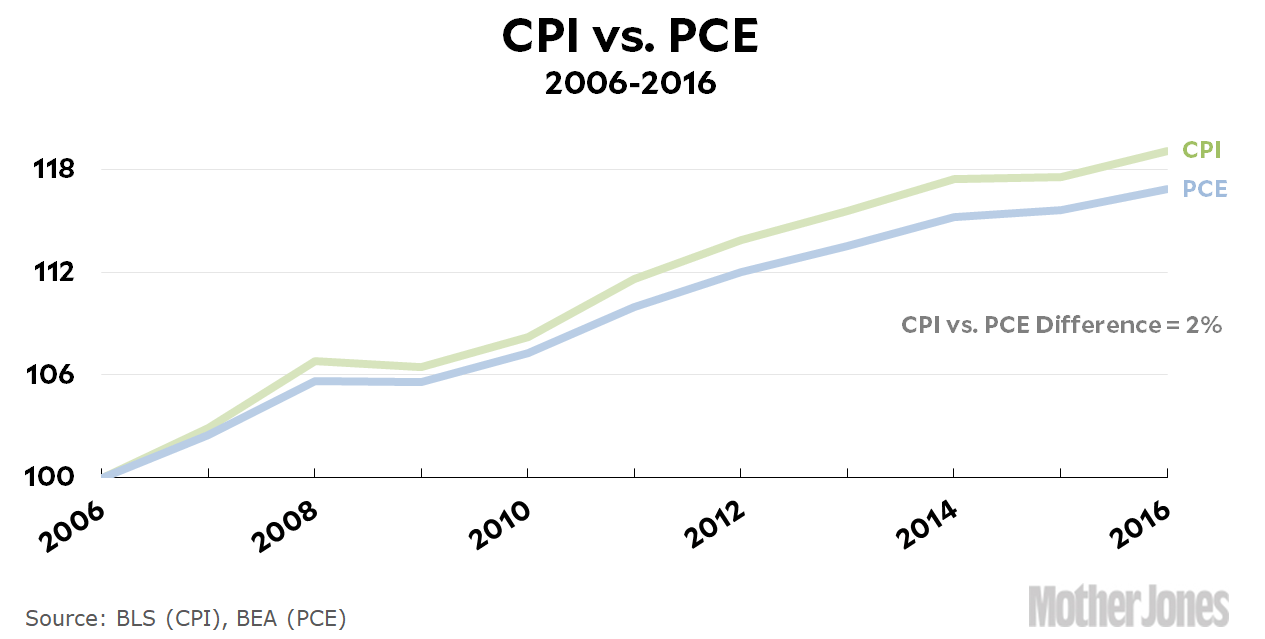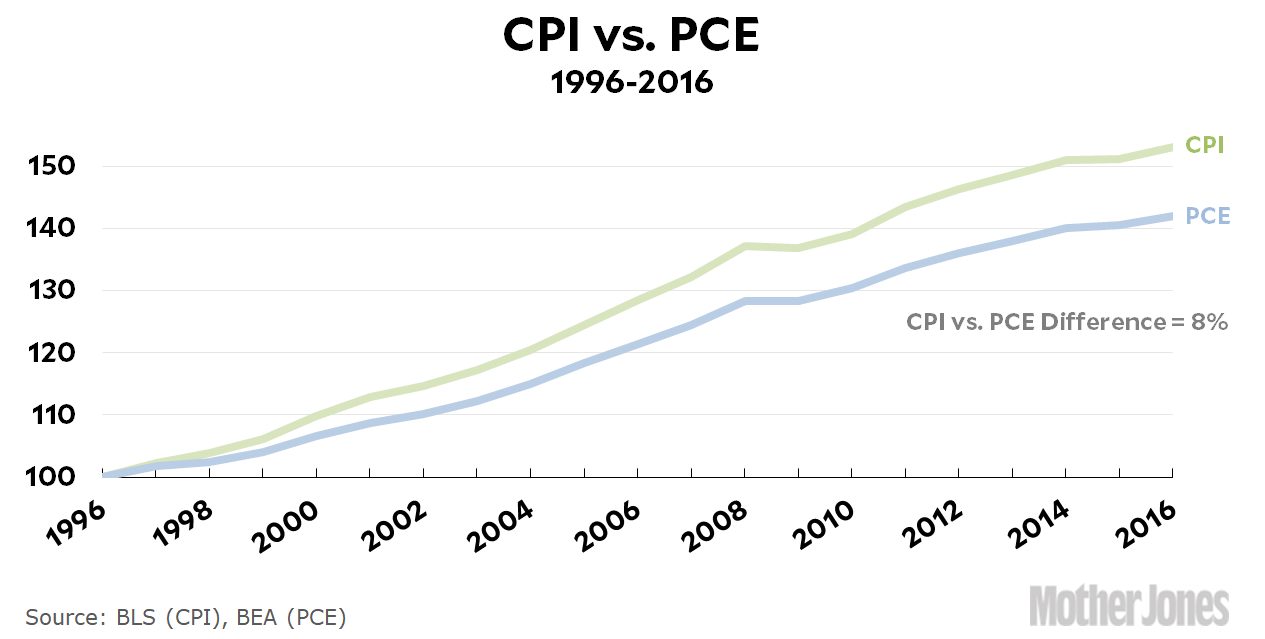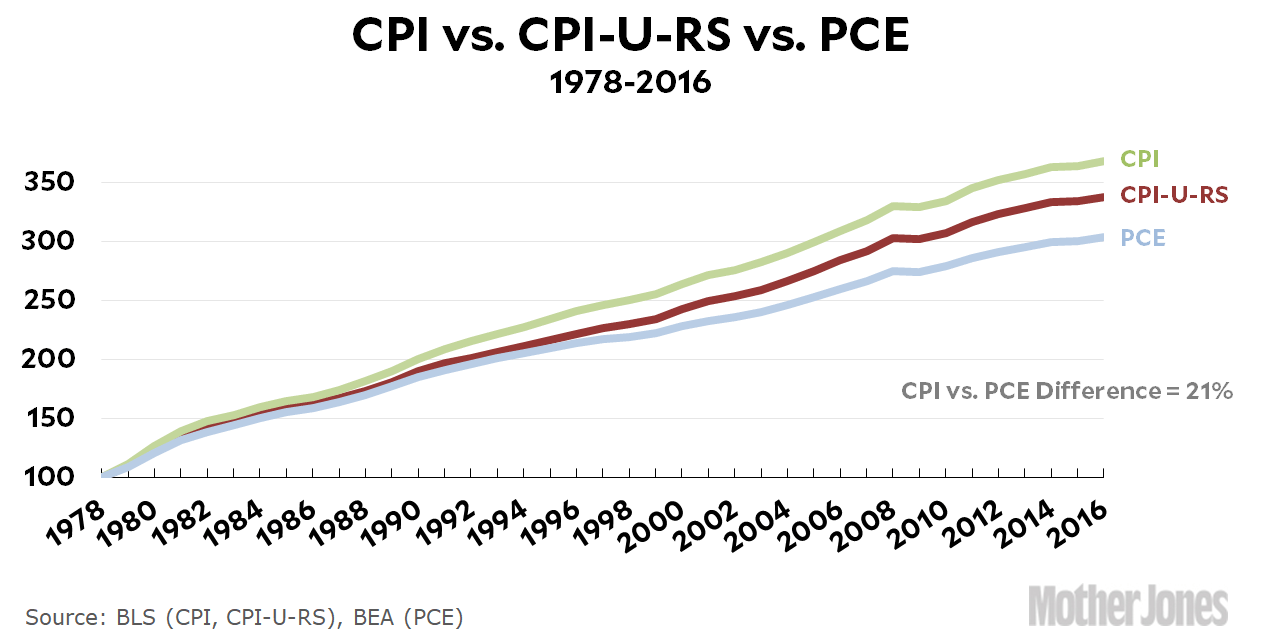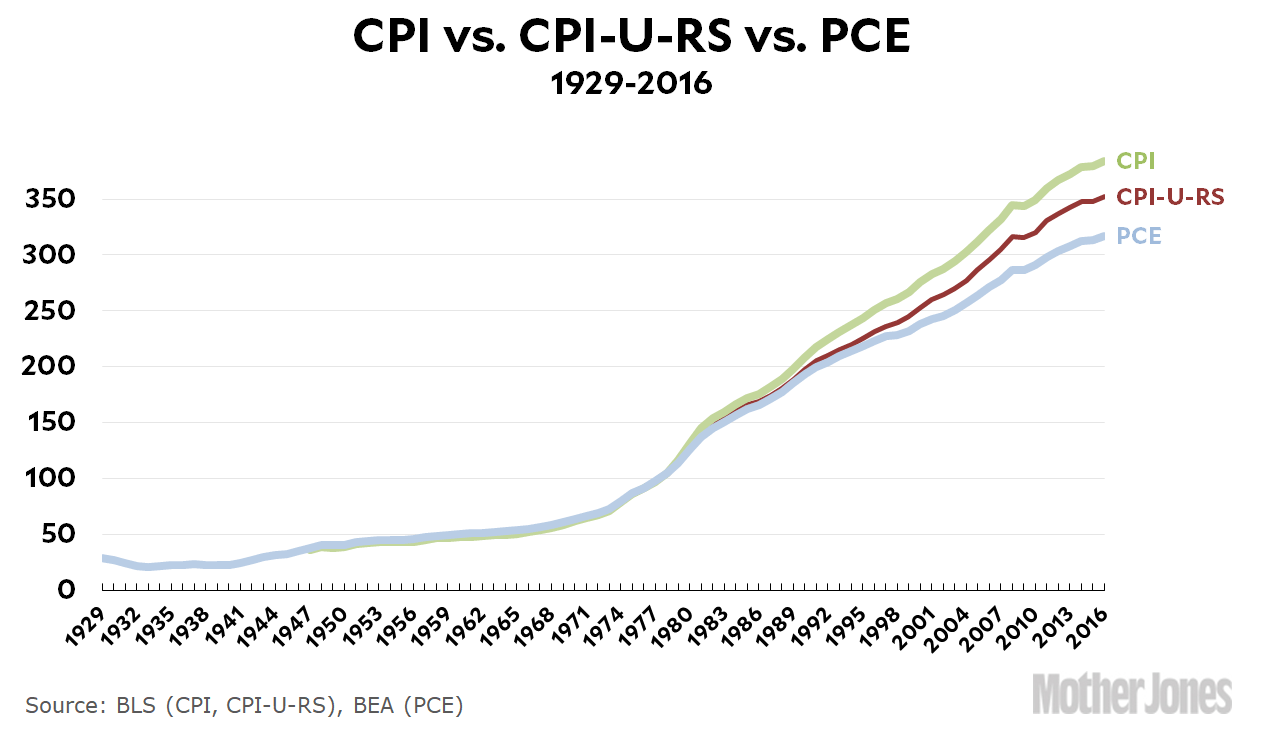This post is long and wonky and probably not worth your time to read. You have been warned! But it’s something I’ve been wrestling with for a while, and this is basically a way of getting my thoughts in order so that I can continue pondering it.
The subject is inflation. Specifically, what’s the best way to measure inflation? I’m talking here about the best general index, not specialized things like CPI-X (an attempt to measure inflation for the elderly) or core PCE (useful to the Fed as a way of judging the strength of the economy). The most common measure of inflation is the Consumer Price Index (CPI), and that’s what you see in the headlines each month when the BLS reports a new inflation number.
But CPI has its problems, and lots of people prefer the Personal Consumption Expenditure index (PCE). Scott Winship has led the charge on this, and you can read a pretty readable explanation of his views here. Long story short, Winship makes a good case for the problems with CPI, but I’m not thrilled with PCE either. I’m usually interested in measuring the lived experience of people—especially the non-rich—and in my opinion PCE uses a weighting system that obscures this.
So what’s the best index? First off, there are plenty of times when it doesn’t matter. Here’s a chart showing CPI and PCE over the last ten years:

They’re nearly identical. If you’re comparing something to last year, or even to ten years ago, just go ahead and use CPI. It doesn’t really make any difference. Here’s a comparison over 20 years:

There’s a little more difference, but still not that much. Obviously this difference might be important in an academic or professional economic setting, but for everyday journalistic use, you can use CPI for a comparison of anything between a year and 20 years ago. It’s going to be fine.
But what if you want to go back further? Here are both indexes going back to 1978:

Now we’re up to a difference of 21 percent. That’s enough to really matter. Luckily, the BLS has created a series called CPI-U-RS that’s become pretty popular. I like it because it seems to hit the right sweet spot between fixing the problems with CPI but retaining better weightings than PCE. In terms of the actual things that people use and buy, I think that CPI-U-RS is probably the best measure we have.
Unfortunately, it only goes back to 1978. However, before then there’s only a tiny difference between CPI and PCE. Here they are from 1929 to the present:

So the best index to use is PCE (indexed to 1978=104) from 1929-1977 and CPI-U-RS from 1978-present. It would be nice if BLS would merge the two series and give the result a snazzy name like CPI-A1, but they don’t. Until then we’ll just have to home brew it ourselves.


















